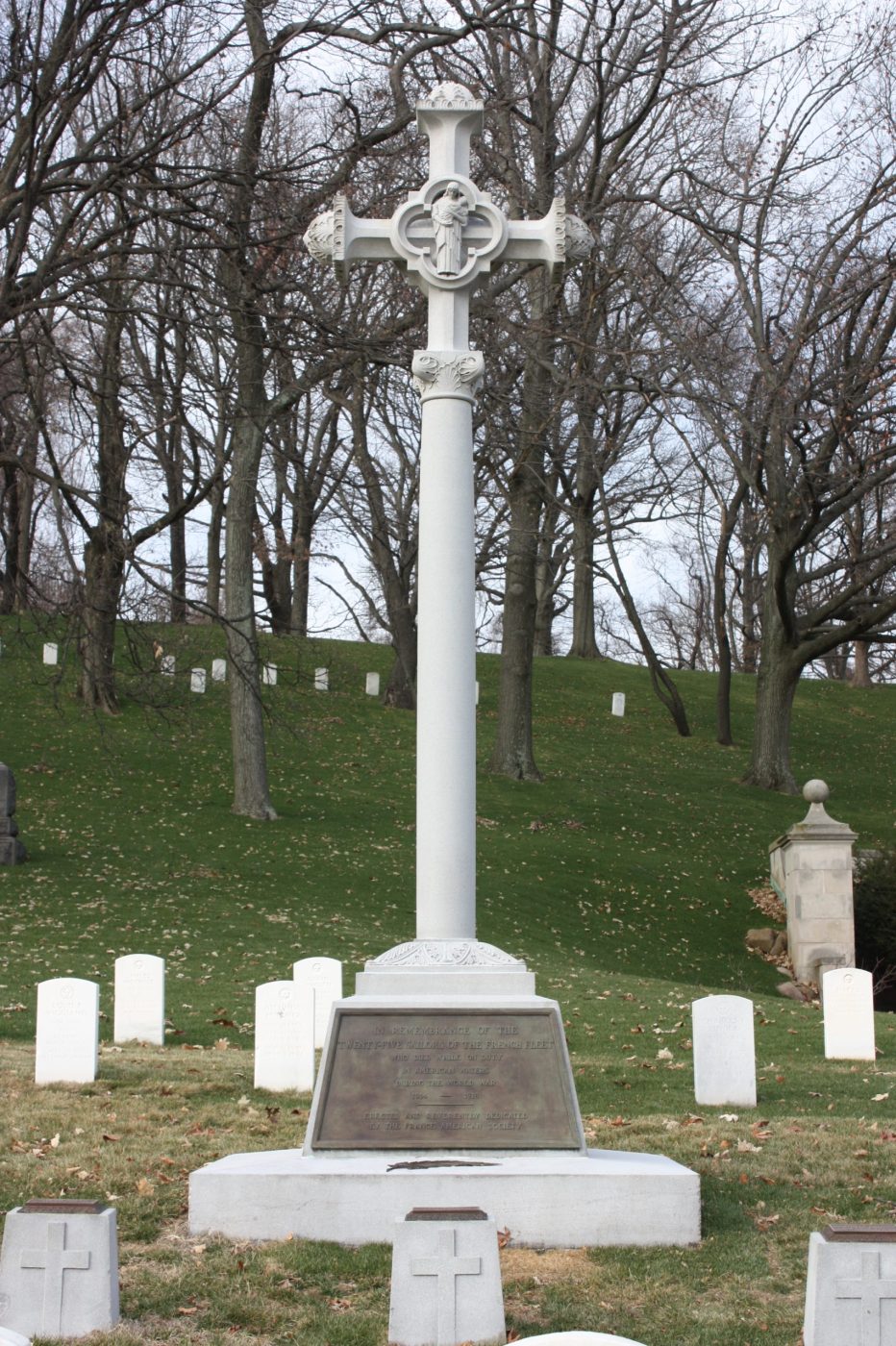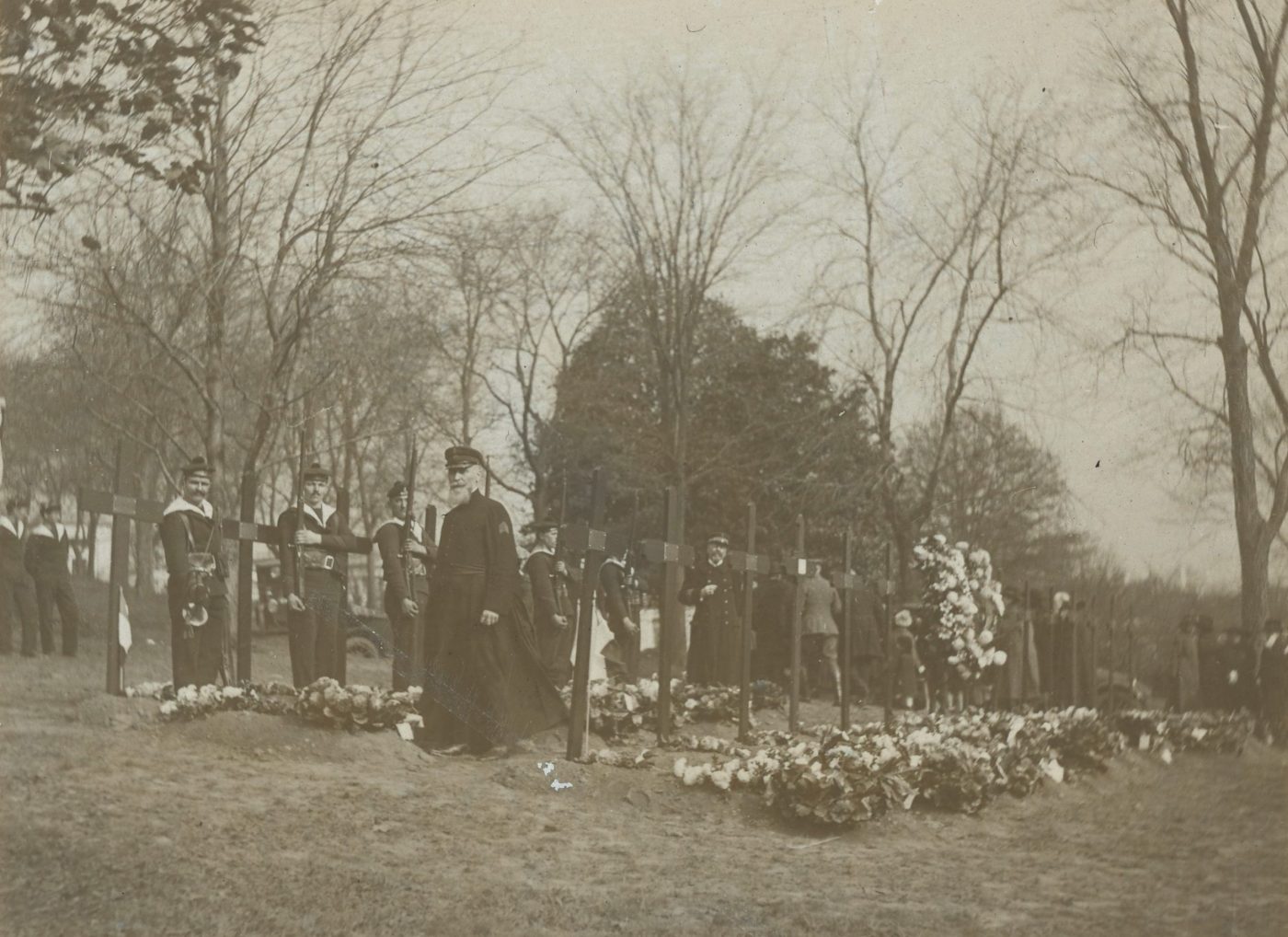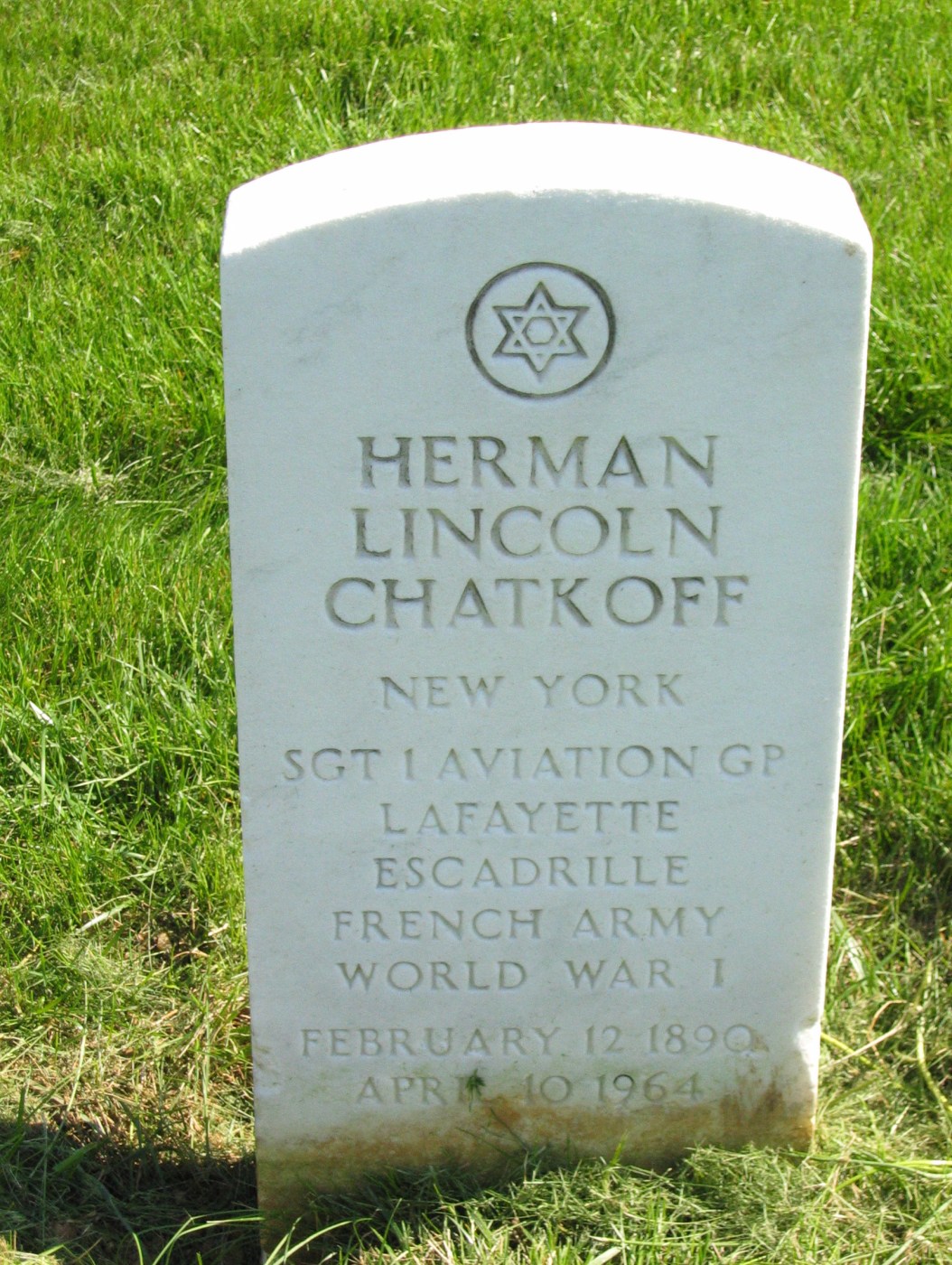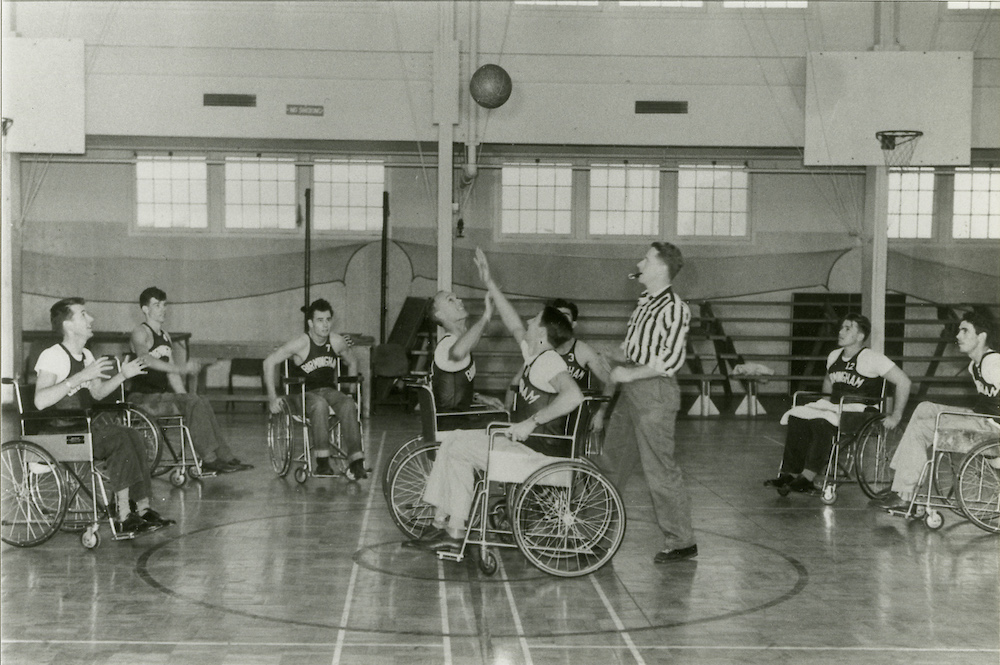
In October 1918, in the waning days of World War I, the French warships Marseillaise, Gloire, and Montcalm arrived at the port of New York. Later that month, sailors from these vessels marched in a Liberty Loan Parade to promote the sale of war bonds. The timing of the patriotic display proved extremely ill-advised. A second wave of the influenza pandemic had already reached American shores. A similar event staged in the streets of Philadelphia the previous month led to outbreak of the disease that sickened an estimated 75,000 people within weeks. In New York, many spectators and participants in the parade also contracted influenza. By the time the second wave had run its course in mid-November, 21,000 New Yorkers had died from influenza or pneumonia.
The French sailors who fell ill were sent to the U.S. Naval Hospital on Brooklyn Navy Yard for treatment. Twenty-five of them died between October 1918 and January 1919. U.S. officials arranged for their burial in an unused section of Cypress Hills National Cemetery in Brooklyn. Their graves were marked by black wooden crosses with bronze name plates. Dedication of the French plot took place on November 2, 1918. Rear Admiral Nathaniel R. Usher of the Brooklyn Navy Yard along with admirals of the French and American fleets and other high-ranking military officials attended the military mass for the deceased. Additional graveside ceremonies were conducted on Bastille Day and Armistice Day in 1919 and then again in 1920. A 12-foot granite cross monument was dedicated at the site on the second Armistice Day commemoration. The monument was built by the well-known New York City memorial design firm of Farrington, Gould, and Hoagland. In 1928, the remains of four of the sailors were returned to France for burial, leaving twenty-one in the cemetery’s “French Section.”

Initially, burial of “friendly” foreign nationals was done as a military courtesy. As a result of the U.S. experience in World War I, the Army updated its regulations in May 1933 to formalize burials of allied foreign nationals in national cemeteries:
In time of national emergency, the remains of officers and enlisted men of the armed forces of other countries who die within the continental limits of the United States while serving as instructors or students with the armed forces of the United States may be buried in any post cemetery or post section of any national cemetery without expense to the United States other than for opening, closing, and marking of the grave.
A few months later, this language was revised again to include military personnel of other countries who died while engaged in promoting national defense in the United States. This change encompassed the burial of the French sailors.

In 1920, Congress also passed a special act granting burial privileges in national cemeteries to U.S. citizens “who served in the Army or Navy of any government at war with Germany or Austria.” They qualified for interment “free of cost” if they died in service or received an honorable discharge after completing their enlistment. This law applied to the many thousands of Americans who joined the Allied armed forces prior to the U.S. declaration of war on April 6, 1917. They volunteered to fight before the United States entered the conflict for a variety of reasons, ranging from youthful idealism or their belief in the Allied cause to a desire for escape, adventure, and military glory. An estimated 40,000 Americans enlisted in the Canadian Expeditionary Forces. Hundreds more volunteered for service in the British Royal Army and Navy and the French Foreign Legion. A large contingent also served as pilots in British and French flying squadrons. Over 450 saw action in the Royal Flying Corps, Royal Naval Air Service, and Royal Air Force. Another 250 or more flew in French squadrons, including 38 in the Escadrille Américaine, the famed unit comprised almost entirely of American volunteer pilots.

Herman L. Chatkoff was one of the Americans who benefited from the 1920 law. He enlisted in the French Foreign Legion at the start of the war and spent more than a year in the trenches on the Western Front. He lived through the mass slaughter during the first months of the Verdun campaign in 1916 and later the same year entered training to become a pilot in the French Air Service. He went on to earn a Croix de Guerre for his bravery in aerial combat during a series of missions in May and June 1917. After the United States joined the conflict, many American aviators transferred from the French to the American flying service, but Chatkoff never had that opportunity. On June 15, he crashed his two-seater aircraft, killing his companion in the plane. Chatkoff survived the accident but the injuries he suffered ended his flying career and left him permanently disabled. In 1931, Congress approved a private law awarding him the same compensation and medical care as other Great War Veterans. He died in 1964 and was laid to rest in Baltimore National Ceremony in Maryland.
By National Cemetery Administration History Program
Share this story
Related Stories
History of VA in 100 Objects
Basketball is one of the most popular sports in the nation. However, for paraplegic Veterans after World War II it was impossible with the current equipment and wheelchairs at the time. While VA offered these Veterans a healthy dose of physical and occupational therapy as well as vocational training, patients craved something more. They wanted to return to the sports, like basketball, that they had grown up playing. Their wheelchairs, which were incredibly bulky and commonly weighed over 100 pounds limited play.
However, the revolutionary wheelchair design created in the late 1930s solved that problem. Their chairs featured lightweight aircraft tubing, rear wheels that were easy to propel, and front casters for pivoting. Weighing in at around 45 pounds, the sleek wheelchairs were ideal for sports, especially basketball with its smooth and flat playing surface. The mobility of paraplegic Veterans drastically increased as they mastered the use of the chair, and they soon began to roll themselves into VA hospital gyms to shoot baskets and play pickup games.
History of VA in 100 Objects
After World War I, claims for disability from discharged soldiers poured into the offices of the Bureau of War Risk Insurance, the federal agency responsible for evaluating them. By mid-1921, the bureau had awarded some amount of compensation to 337,000 Veterans. But another 258,000 had been denied benefits. Some of the men turned away were suffering from tuberculosis or neuropsychiatric disorders. These Veterans were often rebuffed not because bureau officials doubted the validity or seriousness of their ailments, but for a different reason: they could not prove their conditions were service connected.
Due to the delayed nature of the diseases, which could appear after service was completed, Massachusetts Senator David Walsh and VSOs pursued legislation to assist Veterans with their claims. Eventually this led to the first presumptive conditions for Veteran benefits.
History of VA in 100 Objects
The mounted plaque stands in front of the headstones at Mobile National Cemetery in Alabama. The dark, cast-aluminum tablet draws a stark contrast to the sea of pearly marble beyond. Across its face in white lettering runs the sorrowful first stanza of Theodore O’Hara’ elegiac poem, “Bivouac of the Dead,” beginning with the verse “The muffled drum’s sad roll has beat / The Soldier’s last tattoo; / No more on life's parade shall meet / That brave and fallen few.” Tablets bearing passages from O’Hara’s poem can be found in dozens of VA national cemeteries across the country. Originally written to honor the Kentucky volunteers who died in the Mexican War (1846-48), the poem now serves as a literary memorial to all lives lost in service to the nation.






